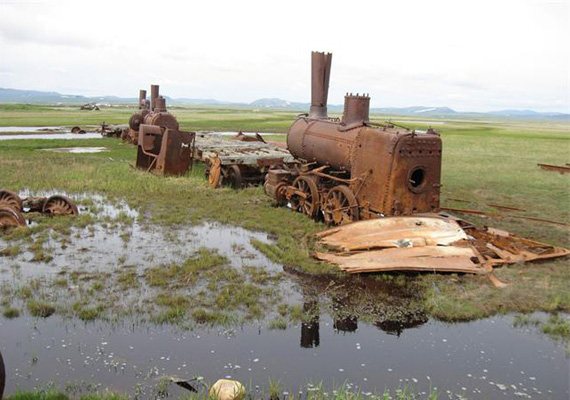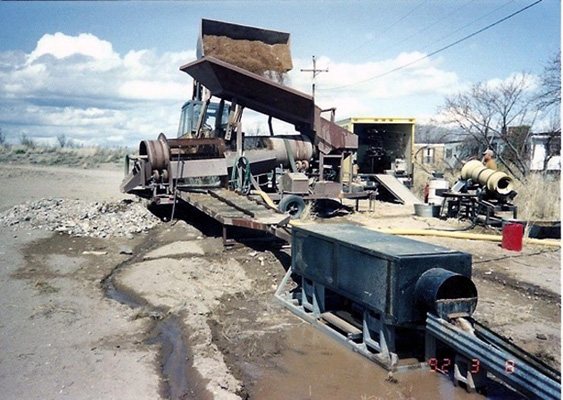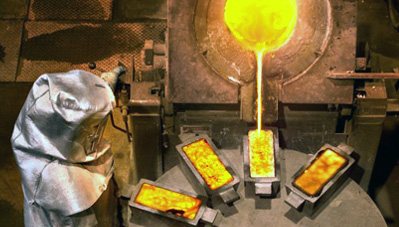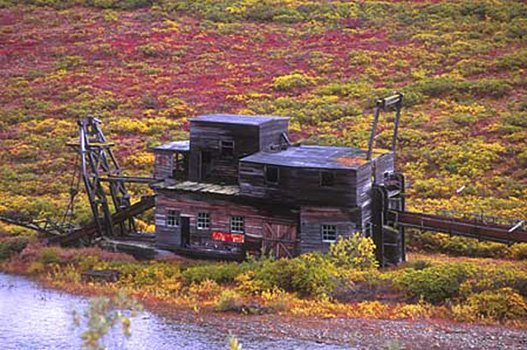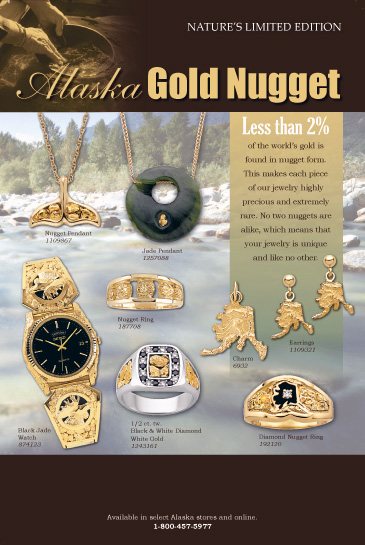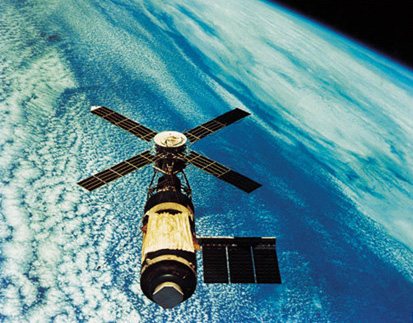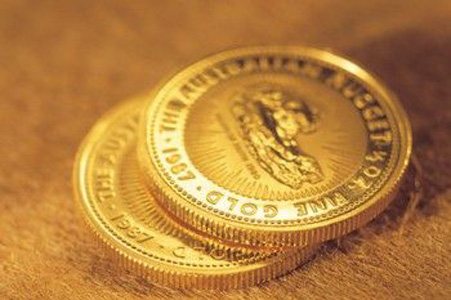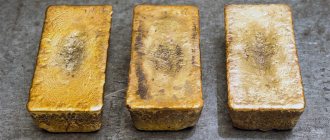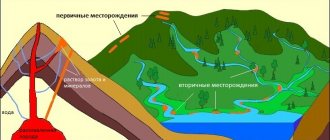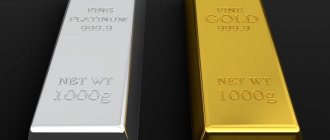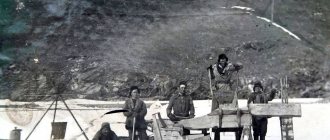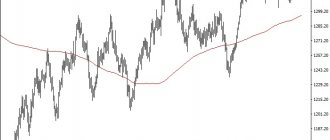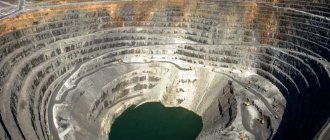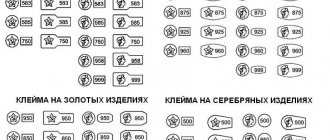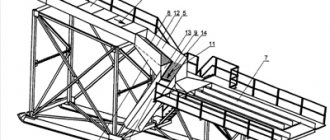| This page is proposed to be merged with the Klondike Gold Rush page. Explanation of reasons and discussion - on the Wikipedia page: Toward unification / October 31, 2017 . The discussion lasts at least a week (more details). Do not delete the template until the discussion is concluded. |
Gold Rush in Alaska
- unorganized massive gold mining in the Klondike region in the Yukon Territory, in northwestern Canada, east of the Alaska border at the end of the 19th century. Sometimes also called the Yukon Gold Rush.
Gold prospecting routes to the Klondike.
The gold rush began in 1896-1897. News spread throughout America about the discovery of gold in 1896 on the Klondike River, in the Canadian Yukon Territory. In Alaska, the largest veins were discovered in Nome in 1898 and near Fairbanks in 1902.
In total, in more than a century since the discovery of the vein, about 12.5 million ounces (about 390 tons) of gold were mined and exported. According to 2008 data, its total value is 4.4 billion US dollars[1] (17.2 billion at value as of March 2014)[ clarify
]. That on the current scale there is not a lot of money at all. For comparison: the net profit of the American company Apple in the financial year that ended on September 28, 2013 amounted to $37 billion[2]. But at that time it was a significant contribution to the US economy.
The Gold Rush is mentioned in several of Jack London's novels.
Historical reference
The nineties of the 19th century in US history were marked by a serious economic crisis. Mass bankruptcies and stock market panics of 1893 and 1896 caused an unprecedented increase in unemployment. The first news in 1896 about the discovery of gold placers in the Klondike region attracted tens of thousands of people who decided to try their luck in this harsh region.
Among the gold miners was Jack London, who survived the difficulties of life in the Arctic. The writer suffered from scurvy and did not find a single gram of gold, but the life experience gained became the basis of literary creativity. This is how the whole world learned about the Klondike gold rush.
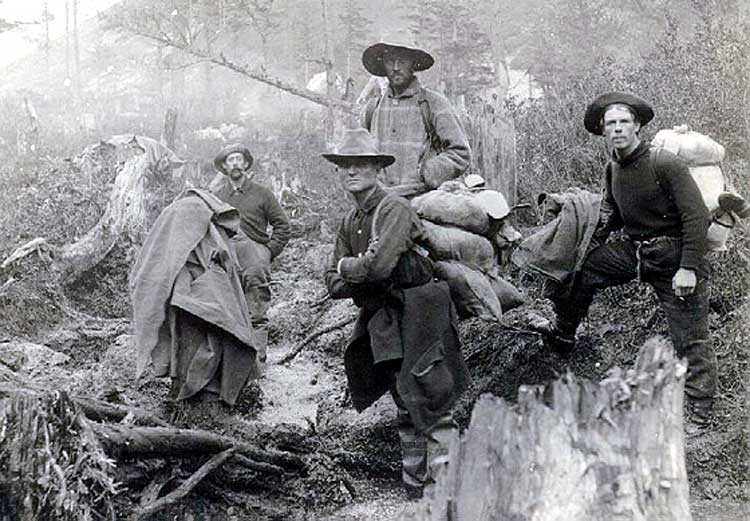
The first major discoveries and the beginning of the gold rush
The first gold deposits were discovered in August 1896 in the Bonanza Creek basin. The discovery was made by members of an expedition that included Indian Jim Skookum, a nephew and a cousin. The travelers were looking for a relative of Kate and her husband George Carmack, after which they met with gold miner from Scotland Robert Hederson.
According to legend, the discovery of gold placers was made by Jim Skookum, but the claim was made to his sister's husband, Carmack. Travelers were afraid of racist persecution, typical of that time: the discovery of an Indian might not only not be recorded, but also taken away.
The news of the discovery of the precious metal quickly spread throughout the area, and by July 1897 reached the shores of the United States. Thousands of people went in search of wealth. The center of gold mining became the small town of Klondike, whose population grew to 40 thousand people. The area's infrastructure was not developed, and there was a threat of famine.
One of the conditions for crossing the Canadian border was the availability of an annual supply of food and a large sum of money. Many sold and mortgaged their houses, risking everything for the sake of illusory wealth. Jack London went to Alaska with money from his sister, who had mortgaged her house.
The gold rush swept through Alaska in three waves. After the first discovery of Carmacks and Skookom in the east, gold was discovered near the town of Nome in 1898, and in 1902, the Italian Felix Pedro found placers of the precious metal on the Tanata River.
Seekers of happiness from all over the world came to Alaska. Among the earners there were many educated, intelligent people. Doctors, teachers, lawyers, clerks, even city mayors gave up prestigious positions and set off on a dangerous journey.
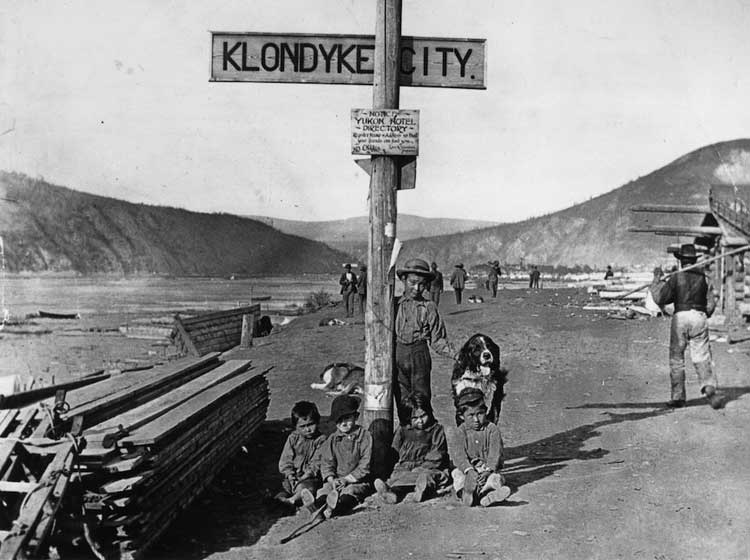
The path of gold miners began from the villages of Dayo and Skagway, through the Chilkoot Pass to Lakes Lindeman and Benet. They then traveled down the river in homemade boats to the town of Dawson. The travelers had to carry huge supplies of provisions and equipment. Many returned back without calculating their strength. In conditions of harsh winter and hunger, miners died. By the time the bulk of the people arrived, the plots of land with gold had already been dismantled.
Order was maintained by the Canadian Mounted Police. She carefully checked travelers when crossing the border, regulating the transport of firearms. The country's authorities were afraid of an armed seizure of the territory by the United States.
Since the discovery of the first placer and within 100 years, 12.5 million ounces of gold, or 355 tons, have been mined in Alaska.
Alaska Gold
We live in Alaska, the famous land of the gold rush. If you ask people about associations with the name “Alaska,” one of the words is sure to be “gold.” At the beginning of 2002, my then 10-year-old son and I had the opportunity to become acquainted with gold washing, taking direct part in it.
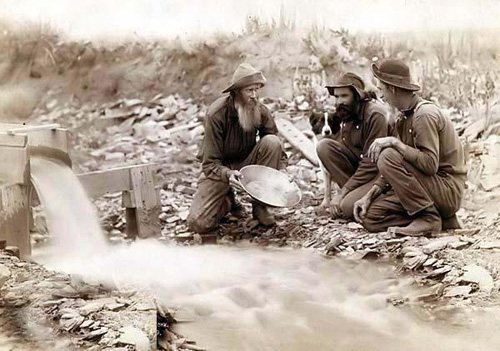
I've always been curious how this happens. When mentioning gold mining, Jack London and adventure films came to mind. If you believe them, at the sight of panned gold, the mind should become clouded and the eyes should go blind. In practice, everything turned out to be very far from descriptions and ideas.
It was April 2002, rainy and cold; the snow shrunk into treacherous floes at the bottom of the puddles - mud and ice. The three of us arrived at a large hangar on the outskirts of the city. We found an old electric mini-concrete mixer on the street near the hangar and forty 25-liter buckets with soil samples in the hangar. It was necessary to wash all these samples and find out the gold-bearing potential of the plot of land that interested the local banker.
The hangar turned out to be a garage where two mechanics were working on trucks. They looked with curiosity at the strange company of a man, woman and child voluntarily hanging out on the street under the cold gloom. I looked at them with apprehension - what if they found out that we were washing gold and as soon as it flowed in a sparkling stream from the concrete mixer conveyor they would immediately attack us. It felt uneasy in this gray cold slush and desolation. But we were looking forward to the nuggets and then the well-deserved earnings from the banker, which we really needed at that time.
|
The husband brought a chute with scar-shaped “detective” boards to the outlet nozzle of the concrete mixer and brought its end into a large basin at an angle so that light soil and stones would be thrown out of the basin by the pressure of water, and smaller and heavier grains of sand would fall into the basin. They turned on the concrete mixer, threw a hose filled with water into it, and began pouring soil into the wide nozzle of the drum. The drum slowly spun, dividing the contents into fractions. Water and soil flowed along the tape, in which only ordinary gray pebbles were observed, but no yellowness was visible. After each bucket, Bruce stopped the concrete mixer and began scooping up soil from the bottom of the basin with a special cup. By twisting and shaking this plate, he removed excess sand from it, and then we saw the first pieces of gold, which were easily and deftly picked up by the thumbs of strong hands, sticking to them. At first it was exciting and interesting how the first harvest went, it seemed that a little more and the ribbon would sparkle completely with golden sand.
| Gold pan (pan) |
After several heavy buckets and an hour-long walk from the hangar to the concrete mixer and back through slippery puddles under the tedious cold rain, enthusiasm began to fade, but fatigue accumulated. By evening, almost all the buckets had been washed. Bruce made notes along the way in a waterproof notebook about each rinsed bucket, indicating the code on it, which indicated where the soil sample was taken (there is a map somewhere with these codes, well, just like Treasure Island). The end of the day was filled with the gloomy silence of tired and disappointed Russians. For each heavy bucket, which had to be lifted almost to chest level and gradually, carefully emptied into a concrete mixer, there were 6-10 grains. Each batch of washed metal from several grains was placed in a small snap-on bag with the batch number from the bucket inscribed.
In the evening a chart was drawn up showing which areas were richer and which were not and the percentage of gold in the soil. It was not worth mining there; the costs would not have been justified, this is the geologist’s conclusion. Our work also did not pay off. We didn't get a penny from the banker. It was incomprehensible and offensive, but I did not ask or interfere. We Soviets are no strangers to subbotniks in favor of someone - we have happened, we know.
| Children mine gold |
For some time, the mined stuff lay at home, then Bruce took these bags of gold crumbs to his son’s class, poured everything into a basin with soil and showed the children how to pan gold by hand (gold panning). Everything that the children caught they took home, considering themselves fabulously rich. Later, the teacher handed Bruce a book made up of thank-you notes from students in the class. It's funny to read the notes of third graders:
"Thank you! That was great! How much does it cost what I washed?”
“Thank you Mr. K! I lathered 4 pieces of real gold!”
“Mr. K., I really enjoyed panning for gold. I hope you will come to us again and I can get more gold.”
“Dear Mr. K., that was great. When you showed how to pan gold correctly, it seemed so easy. But we were more amazed that a minted piece of gold costs only 2 cents.”
And many wrote phrases like: “You are very kind and probably rich, since you just gave us your gold.”
| Enlarged photo of a grain of gold from a geological site |
Perhaps during the gold rush, gold really flowed like a river and drove people crazy. For us, it was simply the result of hard and tiring work. And reading the book with thanks from Elisha’s classmates, I’m already thinking, well, okay, we didn’t earn anything, but we learned how gold is mined in reality and were able to tell the children about it. The ancestors of many of these children came here, attracted by the glitter of gold in the early 20th century or the wealth of oil and gas in the 1980s. Others are still listed as owners of areas staked out by the first prospectors in the 1900s.
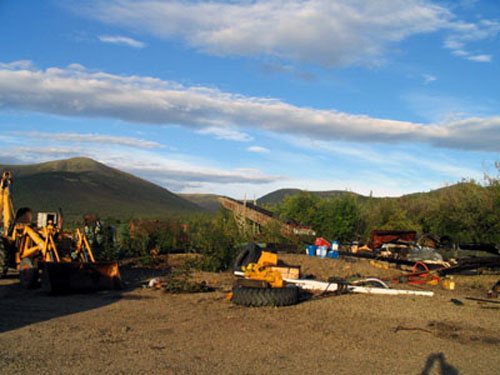
One of my colleagues is the owner of gold-bearing lands. Bee proudly points out jewelry made from metal mined in her own land, but she and her husband earn their living by working in government jobs, panning for gold, probably on weekends and vacations. This is already part of their life, its style.
Deposits of the precious metal in the upper layers of Alaskan soils have become depleted compared to the beginning of the century. Deep mining in permafrost conditions is associated with such costs that the current price of gold on the world market does not justify the costs. Although there are still active gold mines in the area, gold miners are still finding gold. This is no longer a gold rush, but many people, having once connected their lives with gold mining, never give up on it.
Now if I find out that someone owns lands and mines gold on them, my fantasy does not at all picture an utter rich man living in a palace. Most likely this breadwinner lives in a cabin (a log hut) on the outskirts, like the family of my friend Bea, far from the city. The yard is filled with old, rusty equipment and their skeletons, and everywhere you can see the torn up, torn up earth, where every inch is washed and sifted.
My son and I know that it is very difficult to be a gold miner. It's just one of those tough jobs that is specific to Alaska. Many owners of gold-bearing areas and mines entertain tourists, which brings additional income. The souvenir shop, a simple coffee shop, tours of the mine, and participation in the panning of a few grains on your own are popular among tourists and apparently provide good support for past and present miners. Although this is also not as easy as it seems.
What comes easy in this life? Probably just groundless dreams and envy of “these rich Alaskans literally walking through gold deposits.” I always pay attention to the hands of my interlocutors, and nowhere in the continental states of America have I seen so many tired hands. Even wealthy local Alaskans have labor palms, which means the Alaskan dollar is not so light and large. The more I get to know Alaskans, the more I communicate with people who came here 20-30-40 years ago and no longer want to leave this region, the better I understand that I have found my treasure here, from which I don’t want to leave anywhere.
Yes, you can grumble about long dark and sometimes very cold winters, short summers filled with the buzzing of clouds of mosquitoes, you can grumble about the simplicity and simplicity of life, when the reasons for wearing an elegant dress in a year can be counted on the fingers of one hand. You can grumble, but once you leave for a while, there is a longing and a desire to quickly go home to the long winters and short summers with mosquitoes in Fairbanks, which has become my home, and my heart jumps with joy when I see the inscription “Alaska Airlines” in foreign lands with a portrait of an Eskimo in a fur frame on the tail of the plane .
| The size of grains of gold pasted onto a tattered business card of a geologist (to illustrate the values, I also scanned an ordinary pen) |
Yes, this region is unique in many ways. Probably only here you can see fragile girls driving huge units and hundred-ton trucks in gold mining quarries. Only here, in the winter cold, you can see people walking from their cars from the parking lot to the store, dressed in shorts, a T-shirt and flip-flops; -20* Fahrenheit and you wrap your down jacket deeper, hiding your nose in a warm scarf. Perhaps only in Alaska the most popular city vehicle is a pickup truck, i.e. mini-truck, it’s so funny to see fashionable girls in any season with open bellies and jeans on their hips flying out of the cabs of powerful one and a half ton Fords and Dodges. When you get stuck, you know that if anyone passes by, it will be new luxury cars of recently arrived people, not locals, but the first truck will stop and the driver will certainly help, like an Alaskan to an Alaskan. Perhaps only here you can see a miniature lady at a banquet and hear the story of how she fought off her husband from a bear gnawing him. Probably only here can an affectionate and loving mother of four children look like their sister - a sweet girl, and handle any equipment and weapons like a real man. Only here can a single woman, a retired geologist, build for herself, with her own hands, a comfortable two-story cabin house and give practical advice to men. In the peculiar Arctic climate, the character of a true Alaskan is formed - good-natured, friendly, sympathetic, not cowardly, slow, hard-working and not greedy. Probably, just like when mining gold, the overwhelming mass of dirt is washed away from here by the unkindness and extremeness of the climate and living conditions.
How many people admit that having come here for a short time, they stayed forever. Most say that the shortcomings of the natural climate are compensated handsomely by the climate of human relationships. There are good people everywhere, and you won’t surprise America with the diversity of nations, and with tolerance towards others, too, but in Alaska this is especially noticeable and this Alaskan friendliness and openness attracts many. I hope they come here not only with a thirst to receive, but also to further spread our special Arctic climate of the warmth of relationships. Alaska is a special land that some people begin to hate only when confronted with its uniqueness, while others fall in love until the end of their days; indifferent people are rare.
April 2005
|
|
|
|
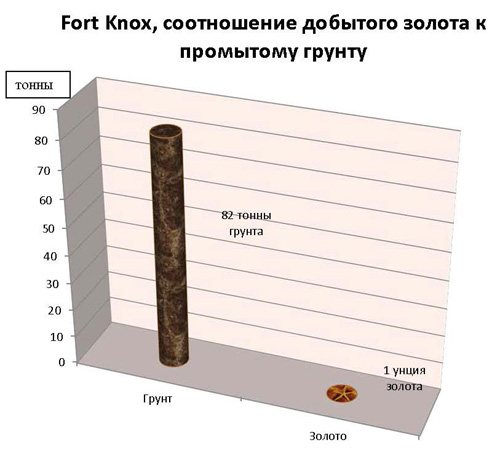
***
| To the point: Since the gold rush, the number of gold miners has greatly decreased. In total, Alaska produces about 10% of all US gold production, but due to rising gold prices, this may change. If the two large projects Donlin Creek (holding 30 million ounces of gold) and Pebble Mine (holding 20 million ounces of gold) come to fruition, Alaska will become the world's largest gold producer (NovaGold is trying to make money by attracting investment in the development of the Donlin mines Creek and Galore Creek). In the meantime, according to the land database of the local city hall, many gold-bearing areas have been idle for many years. Alaska's largest gold mining companies are Fort Knox near Fox (Fairbanks) and Pogo Mine near Delta Junction (currently producing 84% of Alaska's gold). A third Kensington Gold Mine is planned to open near Juneau. Two smaller mines are also being reactivated—Rock Creek near Nome and Nixon Fork near McGrath. Hope Mining Company near Anchorage also hopes to someday expand. Good news is coming from International Tower Hill Mines, which mines gold in Livengood, 70 miles from Fairbanks. According to a brochure from the Fred Meyer jewelry department in Fairbanks, only 2% of gold is mined in gold nuggets. This may be why the selection of bullion jewelry in most stores is not very large, but it is still impressive. There are pendants for only 30 dollars, there are jewelry and watches for 1500 or more thousand dollars, i.e. You can choose according to your wallet size and taste. But lovers of unusual jewelry will have their eyes lit up at some Fairbanks jewelry stores. My favorites are Gold Rush Jewelers on 2nd Avenue and Larson's Fine Jewelers on Noble Street (at Larson's I like how much a jeweler knows about stones, who knows and loves his craft, only at Larson's were we able to find a selection of rare alexandrite and order jewelry from him in connection with the birth of his June daughter). Taylor's Gold-n-Stones in Teddy Bear Plaza on Airport Way (conducts a wide advertising campaign, but somehow the heart or eye did not fall for them), a few blocks away on the same Airport Way is Bishop's Jewelry Gallery of Gold & Diamonds also offering a selection of Alaska-mined nuggets in jewelry. But at the annual Gunshow you can find jewelry from the gold miners themselves; in the summer they pan for gold, and in the winter they make jewelry and sell it. I can't find anything about one of them - my favorite local gold miner and off-duty goldsmith, Steve Losonsky, mines his bullion on Hunter Creek. Two sets of gold and silver forget-me-not earrings with bars in the middle are my favorite. |
|
***
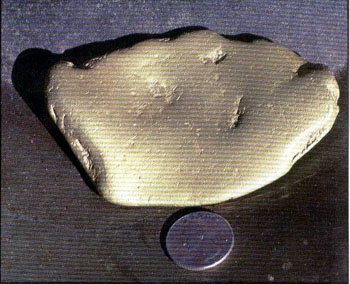
Artel Amur from the Khabarovsk Territory. Its representatives came to Fairbanks in the 80s. Bruce kept the business card of one of the members of the delegation, the chief engineer of Artel “Amur” Ivan Khan. An online search brought me to their website. Han is still successfully working in the Khabarovsk Territory, leading an artel that has now turned into a diversified enterprise, not only mining gold, but also producing a lot of goods and services. I was overjoyed with the joyful news that even 20 years later their visit was remembered, the gifts were kept, and I spoke with Hanya’s secretary in a pleasant and polite manner. The busy businessman had neither time nor words to communicate with a gold mining geologist from Alaska, who had remembered him for 20 years. A normal phenomenon for Russia.
I found in my husband’s papers a report about the Aldanzoloto plant. Judging by the newspaper article https://www.gazetayakutia.ru/read.asp?id=30322-19&dates=24/4/2004, everything is not as good in Aldan as in Khabarovsk. The plant became part of OJSC Polyus Gold (https://www.polyusgold.com) and apparently is not thriving. The delegation from this plant was one of the first to arrive, which means in the 70s. Bruce remembered the tears of bitterness of the old Russian gold miner in the still unfinished Fairbanks store filled with various goods (I also cried with anger when I first entered the closed town and stores for foreigners in the 90s, how shamelessly our “comrades” communist leaders lied to us and robbed us! ); the delight of Russian gold miners in the residential complex of Alaskan goldminers, where you could walk around in white socks; such cleanliness and comfort surrounded the workers after a hard shift; how they looked in disbelief at the fragile girl excavator operator in the quarry, playfully picking up a chicken egg with a multi-ton scoop and transferring the fragile load into a cup nearby (Alaskan Lefty in a skirt?). What was the fate of those Magadan gold miners? Have the shelves of stores in the Russian North been filled with affordable goods since then? Has the work and rest of Russian gold miners become just as comfortable?
^up^
***
*
Gold
in the USA is the same as in Russia.
10K
corresponds to
375 standard 14K
corresponds to
583 standard 18K
corresponds to
750 standard
Gold is a noble yellow metal
, soft and quite heavy. Gold is contained both in the earth's crust and in water, and although its content in the earth is quite low (3 μg/kg), there are very numerous areas that are highly enriched in this metal. Such areas, which are the primary gold deposits, are called placers.
Of the physical and chemical properties of gold, it should be noted, first of all, its exceptionally high thermal conductivity and low electrical resistance. Under normal conditions, it does not interact with most acids and does not form oxides, does not oxidize in air and is resistant to moisture, alkalis and salts, due to which it was classified as a noble metal. Gold is very malleable and ductile. From a piece of gold weighing one gram, you can stretch a wire three and a half kilometers long or make gold foil 500 times thinner than a human hair. Gold is a very heavy metal, which is a big plus in its mining. Its density is high - 19.3 g/cm3, Brinell hardness - 20. Gold is also the most inert metal, but when the ability of aqua regia (a mixture of hydrochloric and nitric acids in a ratio of 3/1) to dissolve gold was discovered, confidence in its inertia was shaken. The metal melts at a very high temperature - 1063°C. Dissolves in hot selenic acid. These physical and chemical properties of gold are widely used for its production.
Gold is most often mined by washing, which is based on its high density (other metals with a density less than gold are washed out in a stream of water). But natural gold is rarely pure; it contains silver, copper and many other elements, so after washing, all gold undergoes deep cleaning - refining. In Russia, the purity of gold is measured by its fineness. It varies from 500 to 950 and shows the gold content in parts per thousand. Gold of 999.96 purity is considered to be 999.96, and this is precisely the purity it comes in bars (the remaining fractions of a percent are copper, silver, zinc, iron, and lead). Ingots are produced in weights of 1 gram, 5 grams, 10 grams, 50 grams, 100 grams, 500 grams, 1000 grams, 12,000 grams, as well as in the form of semi-finished products: foil, wire, tapes.
In all countries, the amount of gold in alloys is controlled by the state. In Russia, five standards of gold jewelry alloys are considered generally accepted: gold 375, 500, 585, 700, 958
.

• 375 sample
. The main components are silver and copper, gold - 38%. Negative property - it fades in air. 375 gold has a color range from yellow to red.
• 500 sample
. The main components are silver and copper, gold - 50.5%. Negative properties - low castability, color dependence on silver content.
• 585 sample
. The main components are silver, copper, palladium, nickel, gold - 59%. The standard is quite high, this is due to the numerous positive qualities of the alloys: hardness, strength, stability in air. Widely used for making jewelry.
• 750 sample
. The main components are silver, platinum, copper, palladium, nickel, gold - 75.5%. Positive properties: susceptibility to polishing, hardness, strength, easy to process. The color range ranges from green through bright yellow to pink and red. Used in jewelry, especially for filigree work.
• 958 sample
. Contains up to 96.3% pure gold. Rarely used, as it is a very soft material that does not hold polish and is characterized by unsaturated color.
• 999 sample
. Pure gold.
• All alloys above 750 standard
do not fade in air.
Gold is used in dentistry, pharmacology, and nuclear research. But the most popular consumer of this metal is the jewelry industry. Here, pure gold is almost never used (the material is too soft); it is used to form alloys with other metals that are significantly superior to gold in mechanical strength and durability. The ratio of silver, copper and other metals allows you to change color to white, red, pink-yellow, green, blue, indigo. In Russia, gold with a reddish tint is traditionally popular, but in Europe - with a yellowish tint.
In recent years, white gold jewelry has become especially popular. White gold contains metals such as platinum (the most “noble” and, therefore, more expensive option), or palladium, silver, and nickel. Naturally, the prices for white gold are determined by which metals (noble or base) and in what percentage they are included in its composition.
Read on Gold, gold hallmarks, measurements
^up^
| Links to the topic and just like that: Do you want to ask the price for Alaskan bullion? Please – Alaskan Gold Nuggets For Sale The most interesting photos about gold mining, Alaska and America taken by traveler and photographer Galen R. Frysinger Vasilkovsky GOK near Kokchetav, Kazakhstan Kupol-Kinross field in Anadyr, Russia An article by Fairbanks resident Anton about visiting a gold mine Webcams installed in different parts of the world including 11 webcams in Alaska US National Debt ticking in real time Statistics in quick numbers about everything Window into the American Home or Open American Wallet Alaska Houses Want to check out the Alaskan Outhouse? The truth about the Alaskan winter Smile. You have lived in America too long if... ... You address your children in Russian - and they answer you in English. ... Vladimir Mikhalev Interactive page of the Russia-Alaska website Notes and articles Life is like life Home Russia-Alaska |
|
|
|
|
|
|
Main gold deposits
For a long time, the main mines being developed were of a loose nature. They provided the bulk of the precious metal. In recent years, preparations have been made for the development of several large ore sources.
Field map
Gold deposits are found throughout the peninsula. The largest of them:
- in the east - Juneau;
- in the south - Anchorage;
- in the west - Nome, Nyack, Donlin;
- in the central part – Fairbanks, Livengood, Fort Knox.
Notes
- History of Mining in Yukon
- Apple's profit for the 2013 fiscal year decreased by 11% - to $37 billion
- University of Washington Special Collections - Klondike Gold Rush. Retrieved August 16, 2008. Archived March 15, 2012.
- History Detectives. Investigations. Feature - Klondike Gold Rush. Retrieved August 16, 2008. Archived March 15, 2012.
- Julie Cruikshank. Reading Voices.
Oral and Written Interpretations of the Yukon's Past . Vancouver & Toronto: Douglas & McIntyre, 1991, p. 124. - Pierre Berton - Klondike: The Last Great Gold Rush, 1896—1899
Espn 0-385-65844-3 and other editions.
Who and how are precious metals mined in Alaska?
US legislation allows the extraction of natural resources by both legal entities and individuals. Private development was allowed in 1872 and has not been repealed to this day.
In addition to the work of mining companies, recreational or tourist gold mining is developing in the state. For work they offer simple tools for washing gold-bearing sands and small dredges. Typically, tourists are offered a comprehensive vacation with accommodation, meals and fishing. Digging is one of the entertainments offered.
Some companies sell gold sand, which can be washed at home and get precious grains.
By the way, there is a show about the gold rush on Discovery Channel. Project participants are invited to engage in gold mining on one of the rivers of Alaska.
Gold mining companies
The main production is carried out by large companies. One of the largest plants, Kinross, is developing the rich Fort Knox deposit in the northeast of the state. About 12 tons of gold are mined here every year.
and Novagold began developing the rich Donlin gold mine in western Alaska. According to preliminary estimates, up to 40 tons of precious metal will be mined here per year.
Another promising project was the development of the Pebble polymetallic deposit in the south of the state. plans to produce 1,150 tons of gold here.
The Japanese company is working at the large Pogo mine. The total reserves of the source exceed 130 tons of metal.
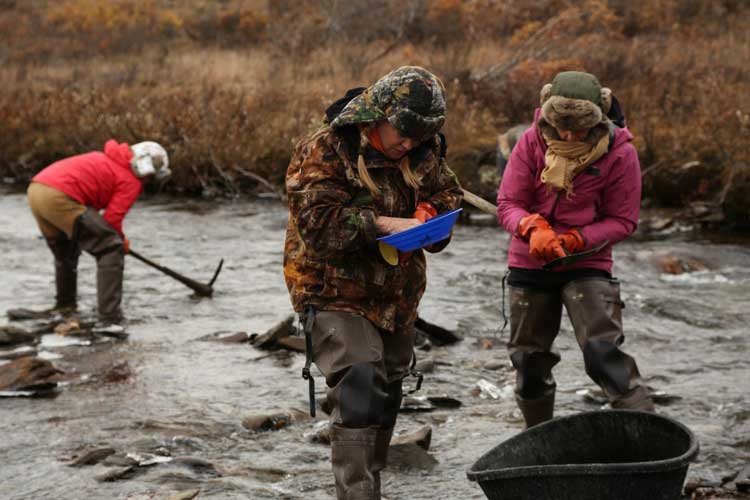
Extraction methods
Large gold deposits are ore in nature. Metal is mined here using an open-pit method, processing millions of tons of ore. Such works quickly transform the area into a lunar landscape.
Alluvial springs are also significant in Alaska. Particularly large gold deposits are located in the Yukon River basin. In such places, dredges of different sizes are used - special floating machines that automatically wash tons of sand.
Gold mining volumes
Currently, placer mining predominates. Every year, the largest mines produce 23 tons of gold. How much metal is mined by numerous small companies, individuals do not know exactly, because... no general statistics are kept.
Links
| Alaska Gold Rush at Wikimedia Commons |
- https://web.archive.org/web/20080915122807/https://www.aslavskaya.com.ua/zolotaya-lixoradka-na-alyaske/
- Klondike. The Chicago Record's
book for gold seekers (1897) (Digitized by the Library of the University of Illinois at Urbana-Champaign) - Klondike: The Quest for Gold (documentary film)
- Victorian Order of Nurses Official Website
- Women of the Klondike
- Map of the Chilkoot and White Passes
- The life of Jack London as reflected in his works
- Skagway: Gateway to the Klondike
- Gold Fever!
Seattle Outfits the Klondike Gold Rush, a National Park Service Teaching with Historic Places (TwHP) lesson plan - University of Washington Libraries Exhibit Alaska and western Canada collection
- Eric A. Hegg photographs
- Frank La Roche photographs
- William E. Meed photographs
- Henry M. Sarvant photographs
- Arthur Churchill Warner photographs
- Chilkoot Pass photographs

